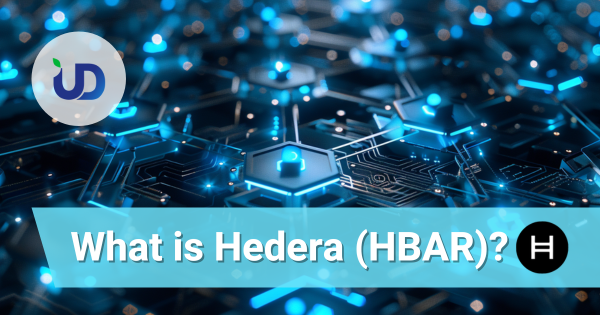What Is Hedera (HBAR)? The Enterprise-Grade Public Network for the Decentralized Future
As the blockchain industry continues to evolve, one name that’s been quietly — yet steadily — gaining attention is Hedera (HBAR). Unlike most public blockchains, Hedera doesn’t rely on traditional proof-of-work or proof-of-stake systems. Instead, it uses a unique consensus mechanism designed for speed, fairness, and security at scale. But what exactly makes Hedera stand out among thousands of blockchain networks?
Let’s explore what Hedera is, how it works, and why it’s becoming a favorite among enterprises and Web3 developers.
What Is Hedera?
Hedera is a public distributed ledger network that aims to offer fast, secure, and fair transactions with minimal energy consumption. It was created to solve some of the biggest limitations found in older blockchain systems — mainly slow transaction speeds, high fees, and scalability challenges.
Instead of being managed by a single company or a group of anonymous miners, Hedera is governed by the Hedera Governing Council, which includes global enterprises such as Google, IBM, LG, Boeing, and Deutsche Telekom. This governance structure is designed to ensure transparency, stability, and long-term trust.
The network’s native cryptocurrency is HBAR, which powers transactions, network services, and staking within the Hedera ecosystem.
The Technology Behind Hedera: Hashgraph Consensus
While most blockchains rely on blocks and chains of transactions, Hedera uses something different — a Hashgraph consensus mechanism.
Developed by Dr. Leemon Baird, Hashgraph is a directed acyclic graph (DAG) technology that allows transactions to be processed in parallel, not sequentially like traditional blockchains.
This unique architecture allows Hedera to achieve:
- High throughput: up to 10,000+ transactions per second (TPS)
- Low and predictable fees: typically under $0.001 per transaction
- Fast finality: transactions are confirmed in seconds, not minutes
- Energy efficiency: far lower power consumption compared to Bitcoin or Ethereum
In simple terms, Hashgraph is faster, fairer, and more scalable — making it suitable for enterprise-grade use cases.
Key Features of Hedera
1. Enterprise Governance
Hedera’s 39-member Governing Council includes world-leading companies and institutions that oversee software updates, treasury management, and policy decisions. This helps maintain the integrity and decentralization of the network without relying on anonymous nodes.
2. Stability and Predictable Fees
Unlike most blockchain networks where gas fees can fluctuate wildly, Hedera offers predictable transaction costs — a critical factor for businesses integrating blockchain into their operations.
3. Carbon-Negative Network
Hedera is one of the few distributed ledgers that is carbon-negative, achieved through efficient network design and carbon offset initiatives — a growing priority for ESG-conscious enterprises.
4. Smart Contracts and Tokenization
Hedera supports Solidity-based smart contracts, enabling developers to build decentralized applications (dApps), issue tokens, and create NFTs, all with the performance and security benefits of the Hashgraph system.
What Can You Build on Hedera?
Hedera’s high speed and fairness make it ideal for a wide range of applications, including:
- Payment and micropayment systems
- Supply chain tracking and logistics
- Tokenized assets and stablecoins
- Decentralized identity solutions (DID)
- NFT marketplaces and digital collectibles
Enterprises and startups alike use Hedera to integrate decentralized functionality without compromising performance or cost-efficiency.
The Role of HBAR Token
HBAR is the native cryptocurrency of the Hedera network, serving two main purposes:
Network Power: HBAR is used to pay for transaction fees, smart contract execution, and network services.
Security and Staking: HBAR holders can stake tokens to help secure the network and earn rewards.
With its fixed maximum supply of 50 billion HBAR, the token is designed to maintain a sustainable economic model over time.
Why Enterprises Choose Hedera
Enterprises exploring blockchain often face a trade-off between performance, compliance, and decentralization. Hedera’s architecture bridges that gap by offering:
Regulated governance under real-world corporations
Stable and scalable performance for production-grade applications
Energy-efficient operations aligning with ESG goals
This unique blend of features positions Hedera as one of the most enterprise-ready distributed ledger technologies in the market today.
The Future of Hedera
As the Web3 ecosystem matures, Hedera is expected to play a pivotal role in real-world blockchain adoption. Its partnerships with Fortune 500 companies and growing developer ecosystem signal strong momentum.
From tokenized assets to carbon tracking systems and DeFi integrations, Hedera’s technology provides a strong foundation for a future where decentralized systems operate at enterprise scale.
Final Thoughts
Hedera (HBAR) represents a fresh take on decentralized infrastructure — one that focuses on speed, fairness, governance, and sustainability. It’s not just another blockchain; it’s a next-generation ledger designed for the real world.
As more businesses and developers seek efficient, low-cost, and compliant blockchain solutions, Hedera’s Hashgraph-powered network may well become one of the leading backbones of the decentralized economy.
UD is a leading blockchain and network security solution provider in Hong Kong
We are dedicated to assisting enterprises in advancing their businesses through innovative blockchain technology, ushering from Web 2.0 to Web 3.0





